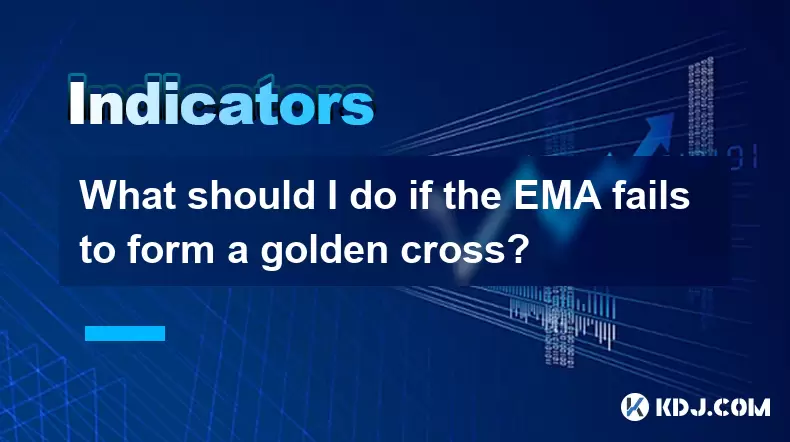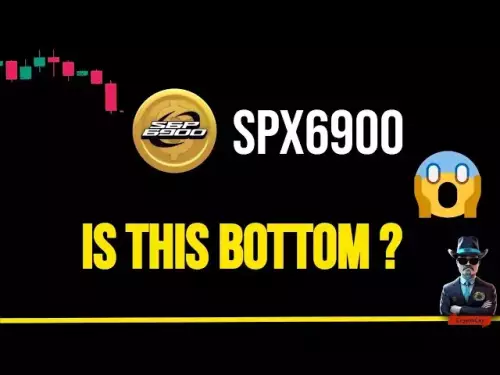-
 Bitcoin
Bitcoin $114600
-0.43% -
 Ethereum
Ethereum $4933
3.82% -
 XRP
XRP $3.108
2.91% -
 Tether USDt
Tether USDt $0.9999
0.03% -
 BNB
BNB $880.4
-0.16% -
 Solana
Solana $211.3
3.62% -
 USDC
USDC $0.0000
0.01% -
 Dogecoin
Dogecoin $0.2412
1.81% -
 TRON
TRON $0.3679
1.80% -
 Cardano
Cardano $0.9431
3.38% -
 Chainlink
Chainlink $26.41
1.18% -
 Hyperliquid
Hyperliquid $46.23
3.93% -
 Sui
Sui $3.791
2.41% -
 Stellar
Stellar $0.4209
1.60% -
 Ethena USDe
Ethena USDe $1.000
0.01% -
 Bitcoin Cash
Bitcoin Cash $597.9
1.86% -
 Avalanche
Avalanche $26.46
2.90% -
 Hedera
Hedera $0.2565
2.52% -
 Litecoin
Litecoin $123.6
2.35% -
 UNUS SED LEO
UNUS SED LEO $9.595
0.49% -
 Toncoin
Toncoin $3.386
0.53% -
 Shiba Inu
Shiba Inu $0.00001336
1.10% -
 Uniswap
Uniswap $11.39
0.93% -
 Polkadot
Polkadot $4.253
2.32% -
 Aave
Aave $357.1
1.31% -
 Cronos
Cronos $0.1614
3.13% -
 Bitget Token
Bitget Token $4.730
0.79% -
 Dai
Dai $0.9999
-0.01% -
 Monero
Monero $283.1
6.99% -
 Pepe
Pepe $0.00001137
0.81%
What should I do if the EMA fails to form a golden cross?
A failed EMA golden cross in crypto trading signals weak bullish momentum—watch for lower highs, low volume, and bearish confirmations like RSI divergence or MACD turns.
Aug 10, 2025 at 03:42 am

Understanding the EMA Golden Cross in Cryptocurrency Trading
The EMA (Exponential Moving Average) golden cross is a widely recognized technical indicator used by cryptocurrency traders to identify potential bullish reversals. It occurs when a short-term EMA (commonly the 50-period) crosses above a long-term EMA (typically the 200-period). This crossover is interpreted as a signal that upward momentum is building, often prompting traders to consider entering long positions. However, not every crossover leads to a sustained uptrend. When the golden cross fails to materialize, it can signal market indecision, weak momentum, or false breakouts. Recognizing this scenario is critical for risk management and strategic adjustment.
Identifying a Failed Golden Cross
A failed golden cross happens when the short-term EMA approaches the long-term EMA but does not complete the crossover, or it briefly crosses but quickly reverses downward. This failure can be confirmed through several technical signs:
- The 50 EMA approaches the 200 EMA but stalls just below it, showing lack of upward momentum.
- A brief crossover occurs, but the price immediately drops, and the 50 EMA falls back below the 200 EMA within a few candlesticks.
- Trading volume remains low during the attempted crossover, indicating weak participation.
- Price action forms lower highs or breaks below key support levels after the failed cross.
These signs suggest that bullish sentiment is not strong enough to sustain a trend reversal. Traders should treat such signals with caution and avoid entering long positions based solely on the expectation of a golden cross.
Adjusting Your Trading Strategy After a Failed Golden Cross
When the EMA fails to form a golden cross, it's essential to reassess your trading approach. Instead of forcing a bullish bias, consider the following actions:
- Shift focus to bearish or neutral indicators such as RSI divergence, MACD histogram contraction, or bearish candlestick patterns like shooting stars or dark cloud cover.
- Re-evaluate support and resistance levels. A failed golden cross near a strong resistance zone increases the likelihood of a pullback.
- Reduce position size or avoid new entries until a clearer signal emerges.
- Use the failed crossover as a potential shorting opportunity if other bearish confluence factors are present.
This adaptive mindset prevents emotional trading and aligns your decisions with current market structure rather than anticipated patterns.
Confirming Market Context with Additional Indicators
Relying solely on EMA crossovers can lead to misleading interpretations. To validate whether a failed golden cross is significant, combine it with other technical tools:
- Volume analysis: A lack of volume increase during the crossover attempt suggests weak conviction. High volume on the reversal down confirms selling pressure.
- Relative Strength Index (RSI): If RSI is below 50 or showing lower highs, it supports bearish momentum despite the EMA proximity.
- MACD: A declining MACD line or a bearish crossover in the MACD histogram reinforces the failure of bullish momentum.
- Price structure: Look for broken swing lows or failure to reclaim key moving averages like the 200 EMA as additional confirmation.
For example, if the 50 EMA fails to cross the 200 EMA and the price simultaneously breaks below a recent swing low with increasing volume, this strengthens the case for a bearish continuation.
Practical Steps to Respond to a Non-Forming Golden Cross
When you observe that a golden cross is not forming, follow these detailed steps to protect capital and position yourself for the next move:
- Monitor the price action around the 200 EMA. If the price repeatedly rejects this level, treat it as resistance.
- Set stop-loss orders above recent swing highs if holding long positions, especially if the 50 EMA begins sloping downward again.
- Activate alerts on your trading platform for EMA crossovers and reversals to catch real-time changes.
- Switch to a lower timeframe (e.g., 1-hour or 15-minute chart) to identify short-term bearish patterns like descending triangles or bear flags.
- Consider closing partial or full long positions if the failure occurs with strong rejection candles like bearish engulfing or pin bars.
These actions ensure that your trading remains dynamic and responsive to evolving market conditions.
Using Failed Golden Crosses in Risk Management
A failed golden cross is not merely a missed opportunity—it serves as a valuable input for risk control. Incorporate this signal into your risk framework:
- Treat the area around the 200 EMA as a high-sensitivity zone. Avoid adding to long positions when price is struggling to cross it.
- Adjust position sizing downward in uncertain phases where technical signals conflict.
- Use the failed cross as a trigger to review your overall portfolio exposure to bullish assets.
- Document the event in your trading journal, noting price behavior, volume, and concurrent indicators for future reference.
This disciplined approach prevents overtrading and maintains consistency in your strategy.
Frequently Asked Questions
Can a failed golden cross turn into a death cross later?
Yes, if the 50 EMA not only fails to cross above the 200 EMA but instead continues downward and eventually crosses below it, this forms a death cross, which is a bearish signal. Monitoring the slope and relationship between these EMAs after a failed golden cross is crucial.
Should I sell my holdings if a golden cross fails to form?
Not automatically. Evaluate the broader context. If other indicators remain neutral or bullish and the price holds key support, a failed golden cross may just indicate consolidation. However, if bearish confirmation appears, such as volume-backed breakdowns, reducing exposure is prudent.
How often do golden crosses fail in cryptocurrency markets?
Golden cross failures are relatively common in volatile crypto markets. Due to high volatility and speculative trading, EMAs can generate false signals. Historical backtesting on assets like Bitcoin or Ethereum shows that golden crosses have a significant failure rate during sideways or bear markets.
Is the 50/200 EMA combination the only one that matters?
No. While the 50/200 EMA cross is the most watched, traders also monitor other combinations like 12/26 for short-term trends or 20/50 for intermediate signals. A failure in smaller EMA crossovers can foreshadow larger failures in the 50/200 setup.
Disclaimer:info@kdj.com
The information provided is not trading advice. kdj.com does not assume any responsibility for any investments made based on the information provided in this article. Cryptocurrencies are highly volatile and it is highly recommended that you invest with caution after thorough research!
If you believe that the content used on this website infringes your copyright, please contact us immediately (info@kdj.com) and we will delete it promptly.
- Rare Find: The 1-Cent Coin Worth €6,000!
- 2025-08-25 02:45:28
- Hacktivism, Tokenization, and the Decentralized Future: A New Yorker's Take
- 2025-08-25 02:45:28
- UNI Price Gears Up for New Cycle: Analyst Outlook Bullish
- 2025-08-25 02:50:11
- BlockchainFX, Polkadot, Stellar: Unveiling 2025's Crypto Opportunities
- 2025-08-25 03:25:27
- Pi Coin Price Patterns: Decoding the Hype and Reality
- 2025-08-25 03:30:12
- Pepe Crypto: Price Predictions and Long-Term Investment Potential - A NYC Perspective
- 2025-08-25 03:05:12
Related knowledge

What does it mean when the +DI and -DI cross frequently in the DMI indicator but the ADX is flattening?
Aug 11,2025 at 03:15am
Understanding the DMI Indicator ComponentsThe Directional Movement Index (DMI) is a technical analysis tool composed of three lines: the +DI (Positive...

What does the sudden appearance of a "dark cloud cover" candlestick pattern during an uptrend indicate?
Aug 13,2025 at 11:35am
Understanding the 'Dark Cloud Cover' Candlestick PatternThe dark cloud cover is a bearish reversal pattern in technical analysis that typically appear...

What does it mean when the moving average, MACD, and RSI all send buy signals simultaneously?
Aug 11,2025 at 01:42pm
Understanding the Convergence of Technical IndicatorsWhen the moving average, MACD, and RSI all generate buy signals at the same time, traders interpr...

What does it mean when both the KDJ indicator and the RSI show overbought signals simultaneously?
Aug 13,2025 at 11:35am
Understanding the KDJ Indicator in Cryptocurrency TradingThe KDJ indicator is a momentum oscillator derived from the Stochastic Oscillator, widely use...

What does it mean when the price is trading above the SAR indicator but the red dots are densely packed?
Aug 09,2025 at 11:49pm
Understanding the SAR Indicator and Its Visual SignalsThe SAR (Parabolic Stop and Reverse) indicator is a technical analysis tool used primarily to de...

What does it mean when the candlestick chart forms a "Morning Star" but trading volume is sluggish?
Aug 12,2025 at 06:28pm
Understanding the Morning Star Candlestick PatternThe Morning Star is a three-candle bullish reversal pattern commonly observed in cryptocurrency pric...

What does it mean when the +DI and -DI cross frequently in the DMI indicator but the ADX is flattening?
Aug 11,2025 at 03:15am
Understanding the DMI Indicator ComponentsThe Directional Movement Index (DMI) is a technical analysis tool composed of three lines: the +DI (Positive...

What does the sudden appearance of a "dark cloud cover" candlestick pattern during an uptrend indicate?
Aug 13,2025 at 11:35am
Understanding the 'Dark Cloud Cover' Candlestick PatternThe dark cloud cover is a bearish reversal pattern in technical analysis that typically appear...

What does it mean when the moving average, MACD, and RSI all send buy signals simultaneously?
Aug 11,2025 at 01:42pm
Understanding the Convergence of Technical IndicatorsWhen the moving average, MACD, and RSI all generate buy signals at the same time, traders interpr...

What does it mean when both the KDJ indicator and the RSI show overbought signals simultaneously?
Aug 13,2025 at 11:35am
Understanding the KDJ Indicator in Cryptocurrency TradingThe KDJ indicator is a momentum oscillator derived from the Stochastic Oscillator, widely use...

What does it mean when the price is trading above the SAR indicator but the red dots are densely packed?
Aug 09,2025 at 11:49pm
Understanding the SAR Indicator and Its Visual SignalsThe SAR (Parabolic Stop and Reverse) indicator is a technical analysis tool used primarily to de...

What does it mean when the candlestick chart forms a "Morning Star" but trading volume is sluggish?
Aug 12,2025 at 06:28pm
Understanding the Morning Star Candlestick PatternThe Morning Star is a three-candle bullish reversal pattern commonly observed in cryptocurrency pric...
See all articles

























































































